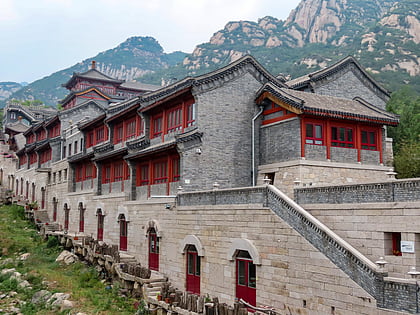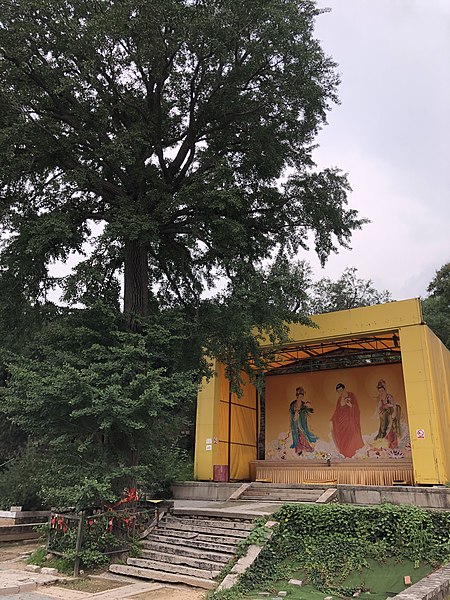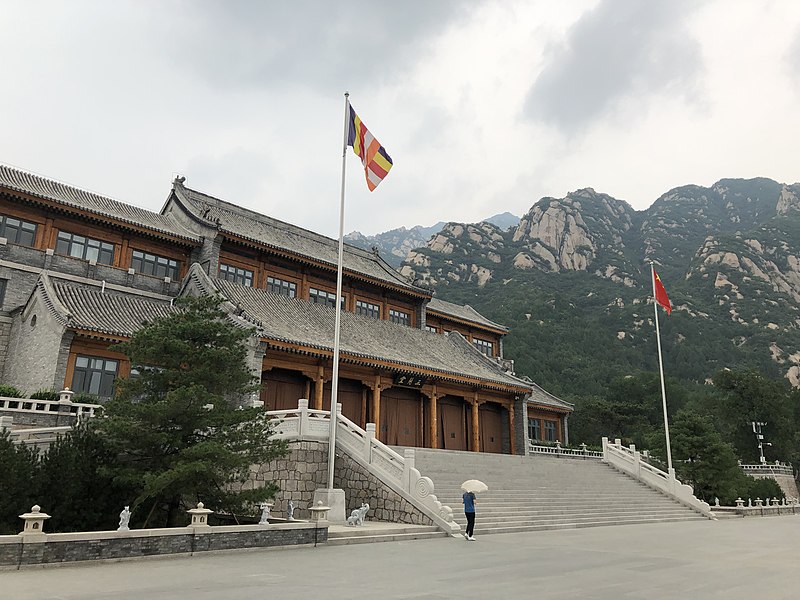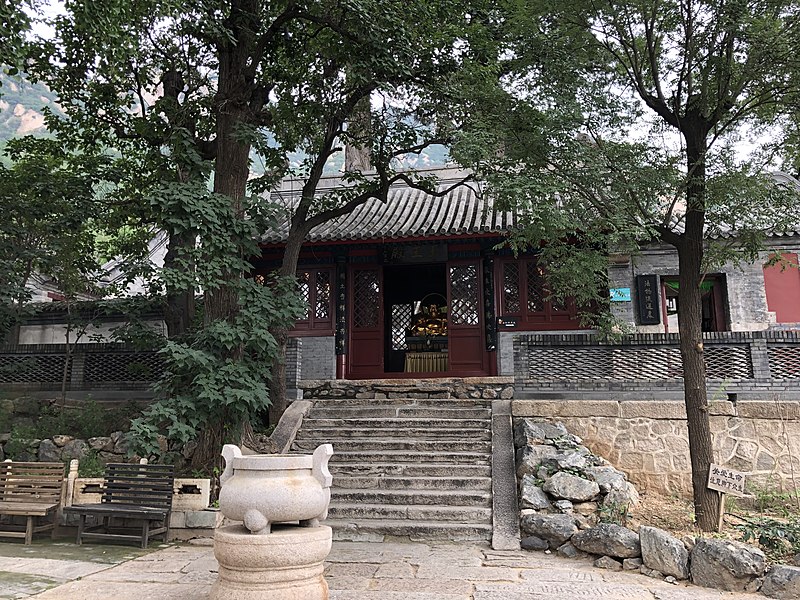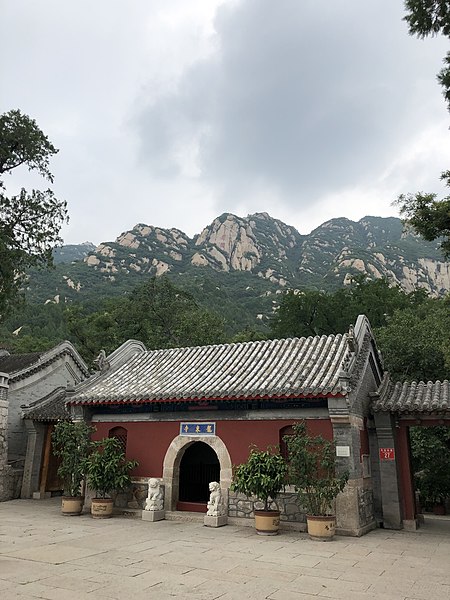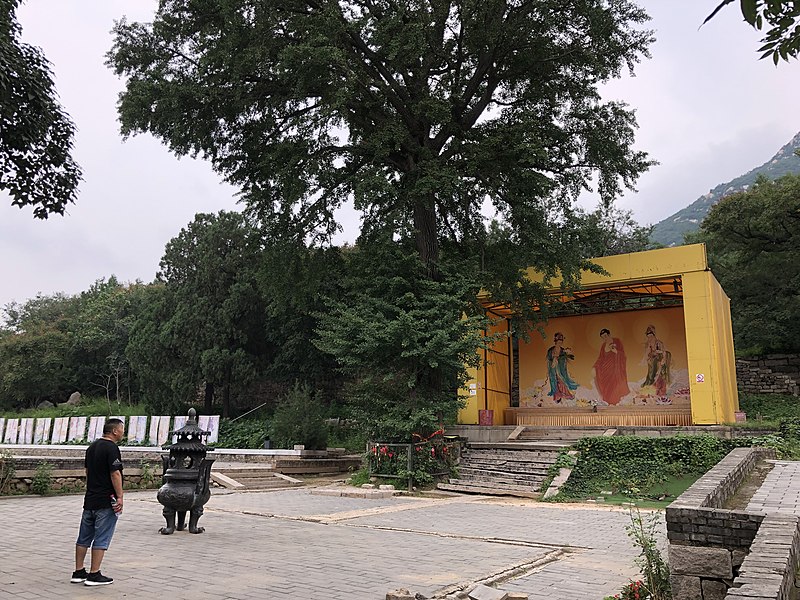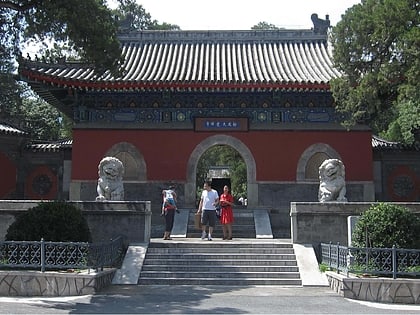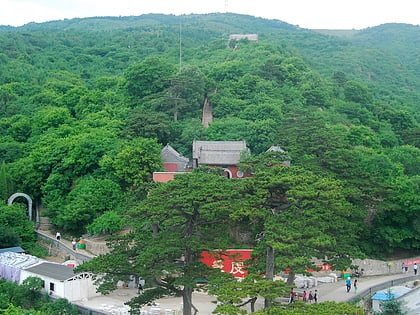Longquan Monastery
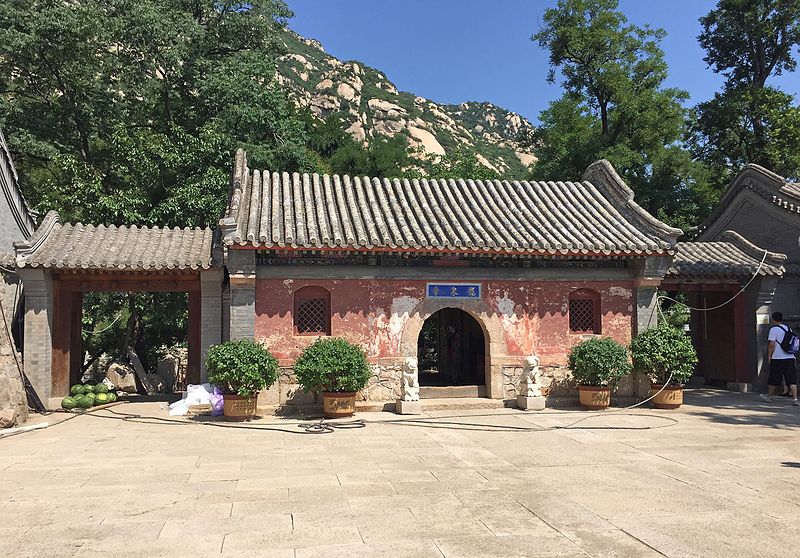
Facts and practical information
Nestled within the serene embrace of Beijing's verdant hills, Longquan Monastery is a beacon of spiritual tranquility and a testament to the enduring legacy of Chinese Buddhism. This ancient monastery, with its history stretching back over a millennium, has become a revered site for pilgrims and a hidden gem for visitors seeking solace away from the bustling city.
Established during the Liao Dynasty, Longquan Monastery has stood the test of time, witnessing the ebb and flow of dynasties and the ever-changing landscape of Chinese society. Its name, meaning "Dragon Spring," originates from a nearby spring whose waters are said to resemble a dragon, a creature symbolizing power and auspiciousness in Chinese culture.
The monastery complex features traditional Chinese architecture, with its grand halls, pagodas, and courtyards arranged in harmony with the natural topography. The main hall, dedicated to the Sakyamuni Buddha, is an embodiment of ancient craftsmanship and spiritual reverence. The surrounding halls house various Buddhist deities, each meticulously crafted and adorned, offering a glimpse into the rich iconography of the monastic tradition.
One of the most striking characteristics of Longquan Monastery is its commitment to integrating modern technology with monastic life. The monastery has embraced innovation, utilizing solar energy and engaging with the public through digital platforms, reflecting a unique blend of ancient wisdom and contemporary practice.
Visitors to Longquan Monastery can partake in various activities, such as meditation sessions, scripture readings, and tea ceremonies, all designed to foster a sense of inner peace and reflection. The monastery's tranquil gardens and forested pathways also provide a serene backdrop for contemplation and connection with nature.
Beijing
Longquan Monastery – popular in the area (distance from the attraction)
Nearby attractions include: Dajue Temple, Mount Miaofeng.
